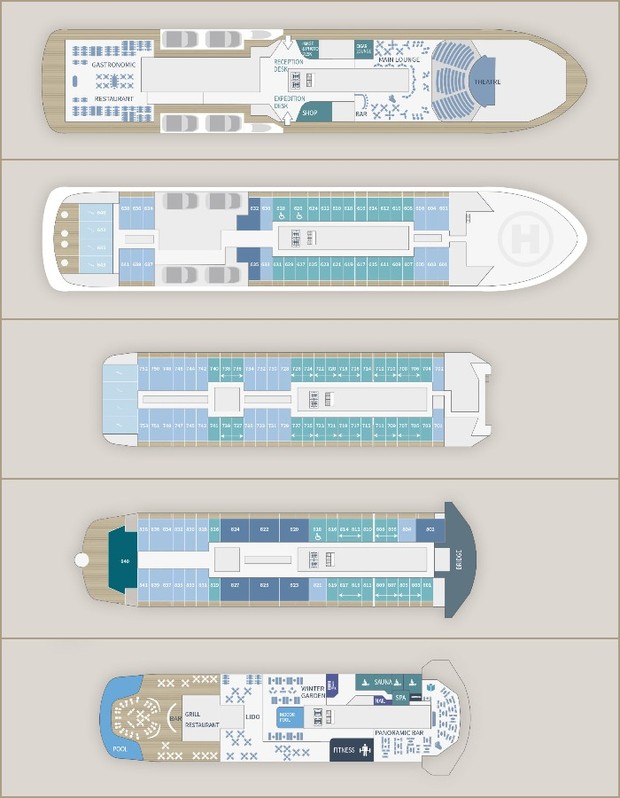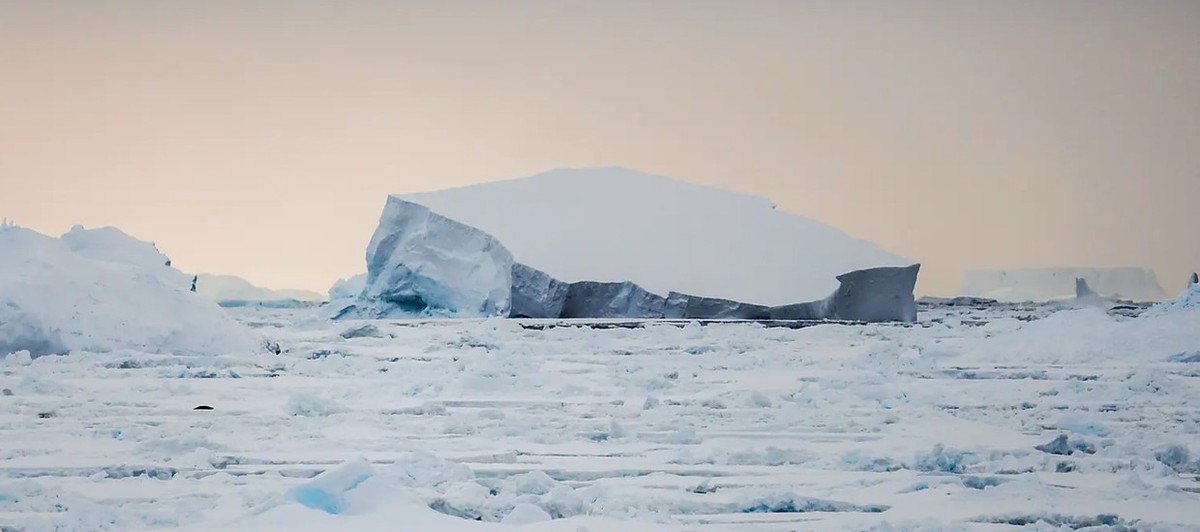
Charcot, Bellingshausen, Dean, Fisher, Ross, Amundsen… Aboard Le Commandant Charcot, the names of these legendary explorers resonate at every moment. Thanks to its unique capacity to sail into the very heart of the ice, Le Commandant Charcot invites you, with respect and humility, to set off in the footsteps of these great Antarctic figures during an all-new and unrivalled half-circumnavigation that will sail from the far south of the American continent to Australia. This journey to the boundaries of the known world will take you on a long adventure, where time stands still, where the horizon stretches into infinity to reveal dreamlike landscapes and abundant wildlife.
Antarctic exploration cannot be separated from the pioneers who travelled in these territories at the edges of the Earth. They left their names everywhere. Inaccessible and elusive are certainly the adjectives that best describe these lands that are among our planet’s most little-known and remote. Like a real explorer, you will cross the legendary southern seas of Bellingshausen and Amundsen, approach Marie Byrd Land, one of the last Terra nullius of our planet, and, if conditions allow it, attempt to reach the Charcot Island, enveloped in its blanket of ice. Very significant in the history of South Pole exploration, Ross Sea is also the world’s largest marine protected area, the kingdom of prodigious wildlife. As a privileged witness, keep a watchful eye and take the time to observe the Antarctic petrels, whales, orcas, seals and penguins that are to be found here.
The power of the polar world will conquer you, leaving you with unforgettable memories of the impressive Drygalski glacier scattered with blue, the endless and constant Ross Ice Shelf, the majestic Witkins and Getz ice shelves, and the ice floe taking over the Amundsen Sea. Here and there, you will notice clues to the past presence of Shackleton and Scott who have forever marked this continent of extremes with their historic exploits. At the foot of Mount Erebus, the highest volcano in Antarctica, their memory becomes tangible: the former base camp has remained intact.
On the way back, in the latitudes of the Howling Fifties, Macquarie Island will emerge, with its cliffs battered by the wind, its lush vegetation and its impressive colony of Royal penguins. You will slip out of the polar world, welcomed by this spectacle of abundant nature.
- The half-circumnavigation of the Antarctic, an unforgettable trip into the heart of the ice and a continent full of extremes.
- The exploratory approach to some of the most little-known islands in the world: Charcot Island and the Islands of Marie Byrd Land.
- A dive into the history of the conquest of the South Pole, from the Bay of Whales, a natural harbour that served as a base for Roald Amundsen’s victorious expedition in 1911.
- The crossing of three southern seas: Bellingshausen, Amundsen and Ross.
- Outings and shore visits in a zodiac dinghy or hovercraft* with a reinforced team of naturalist-guides.
- The landscapes: ice shelves, including that of Ross, surrealist glaciers, monumental icebergs, immersion in the heart of the ice floe.
- The wildlife: crabeater, leopard and Weddell seals; Adelie penguins; humpback whales and orcas, Royal penguins.
- Macquarie Island: wild sanctuary and UNESCO World Heritage Site.
- Many activities: kayaking, hiking or snowshoeing. Discover all the activities in the “PONANT Activities” tab.
Prices quoted here are often dependent on currency fluctuations. Please check with (01432 507450 or info@small-cruise-ships.com) for the very latest price, which may well be cheaper than the one advertised here.
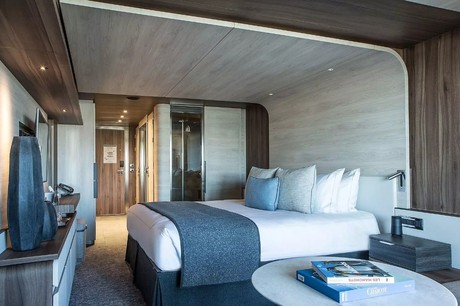
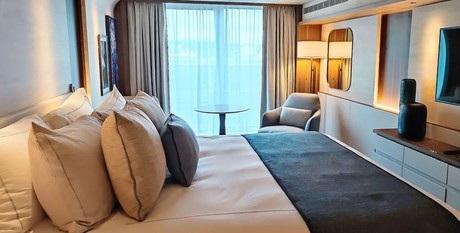
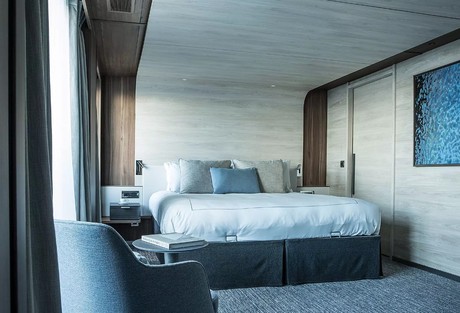
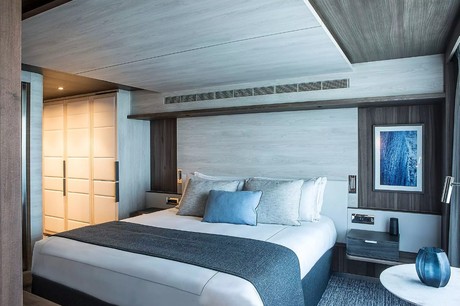
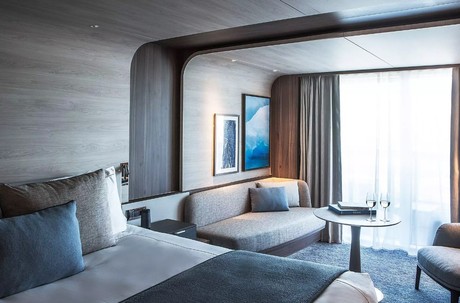
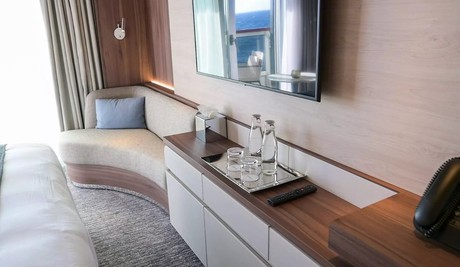
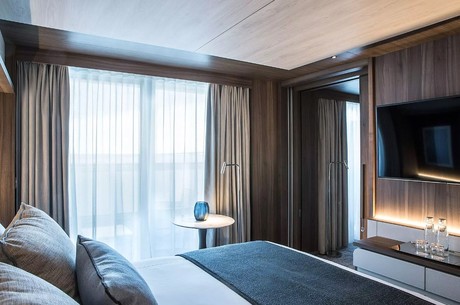
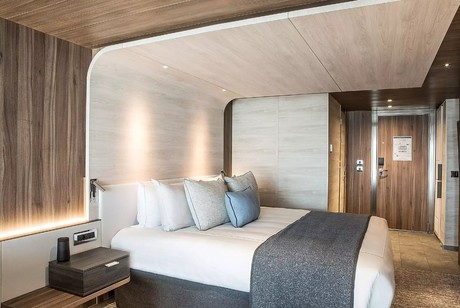
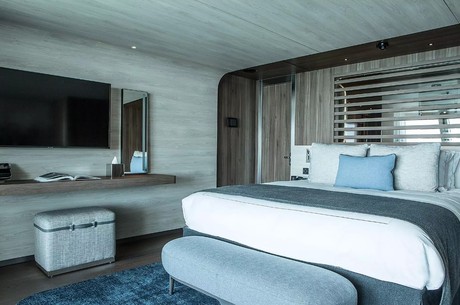
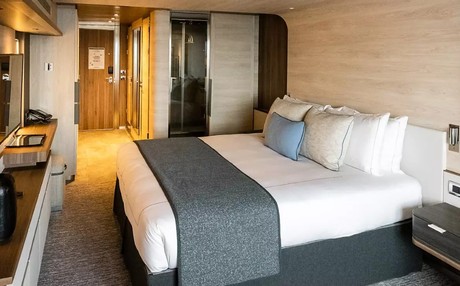
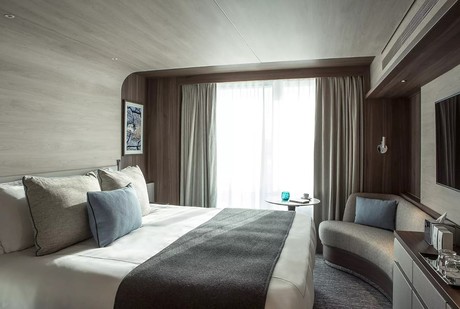
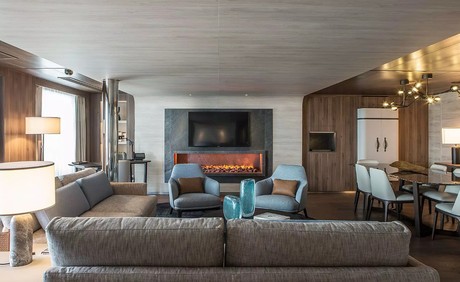
Capital of Argentina's Tierra del Fuego province, Ushuaia is considered the gateway to the White Continent and the South Pole. Nicknamed “El fin del mundo” by the Argentinian people, this city at the end of the world nestles in the shelter of mountains surrounded by fertile plains that the wildlife seem to have chosen as the ultimate sanctuary. With its exceptional site, where the Andes plunge straight into the sea, Ushuaia is one of the most fascinating places on earth, its very name evocative of journeys to the unlikely and the inaccessible…
Use your days spent in the Drake Passage to familiarise yourself with your ship and deepen your knowledge of the Antarctic. The Expedition Leader will first present the IAATO rules of conduct that must be observed during landings in the region and will explain everything you need to know about the zodiac outings. Lectures about the history and wildlife of the Antarctic will be an opportunity for you to learn more about this magical region, where every cruise is a unique experience. You will experience exceptional sailing moments on board and join the naturalist-guides on your ship’s exterior decks to look out for albatrosses, cape petrels, and other seabirds flying over the Drake Passage.
Weather permitting, we'll cross the mythic line of the Antarctic Polar Circle, located along 66°33’ south of the Equator. This iconic area demarcates the point from which it is possible to view the midnight sun during the December solstice. Within this circle, the sun remains above the horizon for 24 consecutive hours at least once a year. Crossing this line, an experience known to few people, is sure to be an unforgettable highlight of your cruise through the polar regions.
When he discovered this island surrounded by sea ice in 1910 from aboard the Pourquoi Pas ? as he mapped Alexander Island, Jean-Baptiste Charcot had not be able to get less than 40 miles away from it. Situated in a zone that experiences frequent low-pressure systems and regular cloud cover, the island remains in many ways an enigma. It is entirely covered in ice and sheer cliffs, with the exception of the rocky outcrops extending over a dozen kilometres in the far north-west. The ice in the narrowest part of Wilkins Sound has been cracking in recent times, thus officially detaching this island from its neighbour, Alexander Island, lying 50 km away. Very few people have landed on this largely untouched island, whose waters attract numerous seabirds, such as petrels, Antarctic terns and skuas.
Stretching from the west of the Antarctic Peninsula to the Amundsen Sea, the Bellingshausen Sea was named after the Russian admiral and explorer who has been attributed the first confirmed sighting of mainland Antarctica, in 1820. Among others, its waters surround two of the Antarctic’s largest islands: Alexander Island and Thurston Island. You will explore this sea amid ice floe, blocks of sea ice and majestic icebergs. The coastal areas along the Bellingshausen Sea are also renowned as the home of colonies of emperor penguins. Depending on the month of the southern summer, you will perhaps be lucky enough to observe isolated adults, adolescents seeking emancipation or recently independent new adults.
The great Norwegian explorer Roald Amundsen – famous as one of the first five men to reach the geographic South Pole – gave his name to this southern sea in 1929, following an expedition in its waters. Almost entirely frozen by a thick ice floe, Amundsen Sea stretches along Marie Byrd Land in Antarctica, between Bellingshausen Sea to the west and the Ross Sea to the east. The monumental icebergs are all that break the monotony of the infinite ice floe here: let yourself be immersed in a feeling of tranquillity before this vastness. These privileged moments sailing in the Amundsen Sea are opportunities to make the most of the original equipment and spaces on Le Commandant Charcot. Find yourself in this refined cocoon. Nourish yourself with the knowledge of the scientists and expert naturalists, who provide unique support during your polar cruise. Or simply contemplate the fascinating and captivating decor from the ship’s exterior decks.
Marie Byrd Land is one of the most remote territories of our planet’s most inaccessible continent. It is a real privilege to just be able to contemplate its shores! Between the Ross Sea and its large shelf to the east and Bellingshausen Sea to the west, the frozen coastlines of these lands are bordered by the Amundsen Sea, partially covered by a thick ice floe. Stretching over more than a million km2 (over 620,000 square miles) in Western Antarctica, its ground is also isolated from the rest of the continent by the Transantarctic Mountains. It is certainly this geographic remoteness and its harsh climate that have made it one of our planet’s rare Terra nullius, a territory claimed by no State. In 1929, Marie Byrd Land got its name from Admiral Richard E. Byrd, in honour of his wife, following his expedition to the region. The exploration of its ice-sculpted landscapes will plunge you into the infinite Antarctic desert, where penguins, seals, whales and orcas are the only living souls. Depending on the time and weather conditions, your exploration of the region will take you towards a string of islands which, although little-known, remain fascinating: Siple Island and its eponymous mount, resulting from an old volcano and Clark Island.
Your itinerary enables you to cross the International Date Line. This imaginary line across the Earth’s surface approximately follows the 180th meridian in the Pacific Ocean. Because of the roundness of the Earth and the necessity of having reference time meridians, we have to change dates when we cross this line. So if your ship is travelling west, you will need to add a day to the expected date; conversely, if travelling east, you will take away a day. This paradox, already noted by Magellan’s crews during his circumnavigation, serves as dramatic motivation in several novels, including Jules Verne’s famous Around the World in Eighty Days.
“The last ocean” is what scientists from all around the world call this deep bay that runs along the edge of Antarctica between Marie Byrd Land and Victoria Land. In 2016, Ross Sea, the last intact marine ecosystem, became the world’s largest marine protected area. The starting point for the greatest southern expeditions - particularly to the South Pole - it was explored by James Clark Ross between 1839 and 1843. It was then that he discovered the enormous barrier formed by a gigantic ice shelf extending out to the open sea and from which titanic icebergs are calved.
Weather and ice conditions permitting, you will be able to discover several of the region’s emblematic sites. Among the possible ports of call, Cape Adare, at the far north of the Borchgrevink Coast, is home to one of the world’s largest Adelie penguin colonies. We will also try to get to Terra Nova Bay, home to the stunning Drygalski Ice Tongue. At least 4,000 years old, it stretches 70 km (43 miles) out to sea from the David glacier and measures 24 km (15 miles) at its widest. On Ross Island, at the base of Mount Erebus, you will follow in the footsteps of the famous explorers Shackleton and Scott who chose Cape Royds and Cape Evans, respectively, to set up their base camps in anticipation of their future historic exploits. In the McMurdo Sound, separating the island from the continent, the scenery is surreal: the Taylor Glacier stretches its branch into the valleys devoid of snow above which stand mountains of stratified rock. A little further, in the Bay of Whales, another tale is told, that of the Norwegian Roald Amundsen, who left from this point to reach, for the first time, the South Pole in 1911.
The Balleny Islands are an extremely remote series of islands extending for about 160 kilometres in a northwest-southeast direction straddling the Antarctic Circle some 270 kilometres north of the Antarctic mainland. The volcanic islands are heavily glaciated and have received few human visitors since their discovery in 1839. Their isolated location within the rich waters of the Southern Ocean has resulted in a species diversity rivalling the entire Ross Sea region. Humpback, fin and minke whales are regular visitors to the rich feeding grounds along with Crabeater, Weddell, elephant and leopard seals. Several of the islands are home to significant colonies of Adélie and Chinstrap penguins. If time and weather permit, guests will have the opportunity to explore the spectacular coastal environments and view the prolific wildlife from our fleet of zodiac.
Spend exceptional moments sailing aboard Le Commandant Charcot, the world’s first luxury polar exploration vessel and the first PC2-class polar cruise ship capable of sailing into the very heart of the ice, on seas and oceans which the frozen conditions render inaccessible to ordinary ships. Le Commandant Charcot is fitted with oceanographic and scientific equipment selected by a committee of experts. Take advantage of the on-board lectures and opportunities for discussion with these specialists to learn more about the poles. Participate in furthering scientific research with PONANT and let us discover together what these fascinating destinations have yet to reveal to us.
Long celebrated as one of the wonder spots of the world, Macquarie Island is an island of great beauty and outstanding natural diversity, a breeding place for more than 3.5 million seabirds, most of which are penguins. There are four species breeding on Macquarie Island: Royals, Kings, Gentoos and Rock Hoppers. There are also three types of fur seals and one seventh of the world's population of elephant seals breeding on the Island. In 1948 The Australian National Antarctic Research Expeditions (ANARE) established its expedition headquarters on Macquarie Island. If time and weather permit, guests will have the opportunity to land ashore and view the prolific wildlife that resides here.
Spend exceptional moments sailing aboard Le Commandant Charcot, the world’s first luxury polar exploration vessel and the first PC2-class polar cruise ship capable of sailing into the very heart of the ice, on seas and oceans which the frozen conditions render inaccessible to ordinary ships. Le Commandant Charcot is fitted with oceanographic and scientific equipment selected by a committee of experts. Take advantage of the on-board lectures and opportunities for discussion with these specialists to learn more about the poles. Participate in furthering scientific research with PONANT and let us discover together what these fascinating destinations have yet to reveal to us.
Hobart occupies a wonderful location at the mouth of the Derwent River, overseen by majestic Mt Wellington and surrounded by natural bushland. The Tasmanian capital is Australia's second-oldest city, after Sydney, and the picturesque waterfront is bordered by 19th-century warehouses and colonial mansions. Salamanca Place is packed with shops, galleries and restaurants and the fascinating Museum of Old and New Art (MONA) is a short ferry ride from the quay. Hobart is within easy reach of some of Tasmania's best-known destinations, from historic Port Arthur and the rugged Tasman Peninsula to Bruny Island, the Huon and Derwent Valleys and Mount Field National Park.
We are privileged guests in these extreme lands where we are at the mercy of weather and ice conditions. Our navigation will be determined by the type of ice we come across; as the fast ice must be preserved, we will take this factor into account from day to day in our itineraries. The sailing schedule and any landings, activities and wildlife encounters are subject to weather and ice conditions. These experiences are unique and vary with each departure. The Captain and the Expedition Leader will make every effort to ensure that your experience is as rich as possible, while respecting safety instructions and regulations imposed by the IAATO.
Le Commandant-Charcot
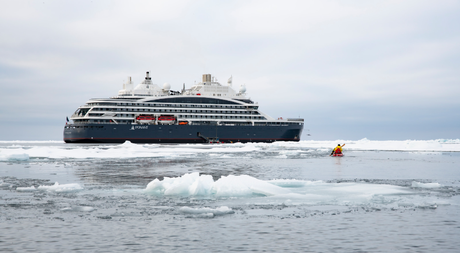
| Cabins and suites | 135 |
|---|---|
| Built | 2019 - 2020 |
With its hybrid propulsion combining liquefied natural gas (LNG) and electric generators, Le Commandant-Charcot has been designed to minimise the environmental impact of travel to the furthest latitudes.
The decoration of the ship, designed by two internationally renowned design and architecture firms - the studio of Jean-Philippe Nuel and Wilmotte & Associés - is designed to be in harmony with the environment. The approach is contemporary with the desire to create a warm and elegant setting; stone, wood and leather recall the natural environment in which the ship is sailing.
Equipped with just 135 staterooms including 31 suites with balconies and outside views, Le Commandant-Charcot welcomes you in an intimate and refined atmosphere. Outstanding gastronomy in the two restaurants, relaxation in the indoor pool surrounded by its winter garden, relaxation in the well-being area with sauna and Snow Room... Like on a private yacht, each of our guests is unique.
PUBLIC AREAS
Le Commandant-Charcot has many common areas that are designed and equipped to meet all of your needs while preserving the intimacy of each passenger. A 177 m² reception area includes: A reception/concierge desk, An expeditions desk, The ship’s administrative services, The sales office, manned by our Hospitality & Travel Manager officer, Our boutique which sells clothing, jewellery, beauty products, postcards and various accessories, The image & photo desk.
The different lounges include a 302 m² main lounge including a 28 m² cigar lounge, a tea corner and a bar, with live music on selected evenings, A 400 m² panoramic bar and lounge, An open-air Bar.
The recreation spaces
- Fitness & Beauty Corner: Fitness room: Elliptic, running machines, bicycles...
- Beauty Corner: Hairdresser, Massage rooms, Sauna, Snow Room, Nail Shop.
- Pool area: Indoor Pool and winter garden - Outdoor Pool
Theatre: Capacity: 270-276 - Main show room for conferences and live entertainment on selected evenings - State-of-the-art audio and video technology.
Leisure area: Public areas - Library - Medical centre.
16 Zodiacs on board.
